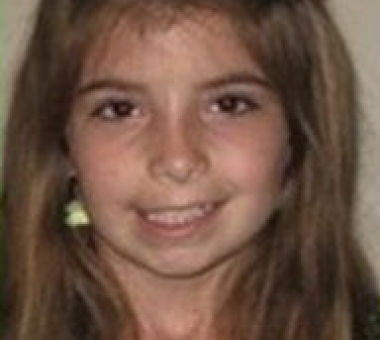Stories of Hope and Recovery

Anna Grace Bundros
Thriving After Successful Treatment of Congenital Heart Defect
Anna Grace Bundros was a happy and healthy newborn, a bundle of joy to her parents, Lara and Tom. Throughout the next six years of her life, Anna Grace met every milestone and proved to be an active, vibrant little girl who was a very enthusiastic learner. Despite this, Anna Grace was small for her age and often a little lethargic, lacking the energy to play for hours like other kids her age.
When Anna Grace was six years old, the Bundroses visited a pediatrician who discovered that Anna Grace had a heart murmur, a condition common in small children. Still, to be sure that it was not something more serious, the pediatrician recommended that Anna Grace see a pediatric cardiologist for a more detailed evaluation. She received an electrocardiogram (often called an EKG or ECG). An EKG is a noninvasive and painless test that measures the heart's electrical activity and records any disturbances in heart rhythm. The EKG suggested that Anna Grace might have an atrial septal defect (ASD), a type of congenital heart disease where a hole exists in the wall that separates the heart’s two upper chambers (the atria). This was confirmed by an echocardiogram, which revealed a large secundum atrial septal defect with enlargement of the right side of her heart.
Many people with an ASD (Atrial Septal Defect) will not show severe signs or symptoms, but some may experience symptoms such as shortness of breath and fatigue. While Lara and Tom were shocked at the news, they suspected the ASD contributed to Anna Grace’s fatigue and overall lack of energy. The family soon met with Dr. Dennis Kim, a pediatric cardiologist at Children's Healthcare of Atlanta, to discuss the options and risks associated with fixing Anna Grace’s ASD. There were two treatment choices - either Anna Grace would need open-heart surgery or a less invasive, catheter-based procedure. ASDs (Atrial Septal Defect) are not typically life-threatening at an early age, so the thought of Anna Grace undergoing open-heart surgery was daunting for Lara and Tom.
“If not treated, an ASD can eventually cause irreversible lung damage in some people due to abnormally increased blood flow through the heart and to the lungs and may also lead to the development of arrhythmias. Over time, this may result in abnormally high pressures to develop in the lung vessels and cause severe strain on the heart,” said Dr. Kim. “The Bundroses were lucky to discover Anna Grace’s ASD early in life. Some people do not discover the defect until later in life when damage to the heart and lungs has already occurred.”
After consulting with Dr. Kim, Tom and Lara decided to proceed with the procedure to fix Anna Grace’s ASD. Dr. Kim thoroughly explained how the procedure would work and addressed Bundroses’ questions and concerns. On the day of Anna Grace’s procedure, a different type of ultrasound, called a transesophageal echocardiogram (TEE), was performed to assess the ASD further and to help in the placement of the ASD closure device.
“We were pretty concerned that Anna Grace would need to have the open-heart surgery,” Lara said. “We kept pushing for the catheter-based method because we wanted Anna Grace to experience as little pain and recovery time as possible. No parent wants to think about their child’s chest being cut open.”
Dr. Kim could close the hole by placing a specially designed device through a catheter inserted from the leg and positioning it over Anna Grace’s ASD to close it off. After the procedure, Anna Grace stayed at the hospital overnight and was discharged home the next day after tests showed the device was working perfectly. The Bundroses are very thankful to Dr. Kim for his magnificent work and patience throughout the process.
Today, Anna Grace is thriving. She is now free to concentrate on the more important things like softball, gymnastics, reading, and horseback riding.
Of the thousands of babies born each year with a cardiovascular defect, 4% to 10% have septal defects (“holes in the heart”). In many people, the signs and symptoms may not occur until adulthood.